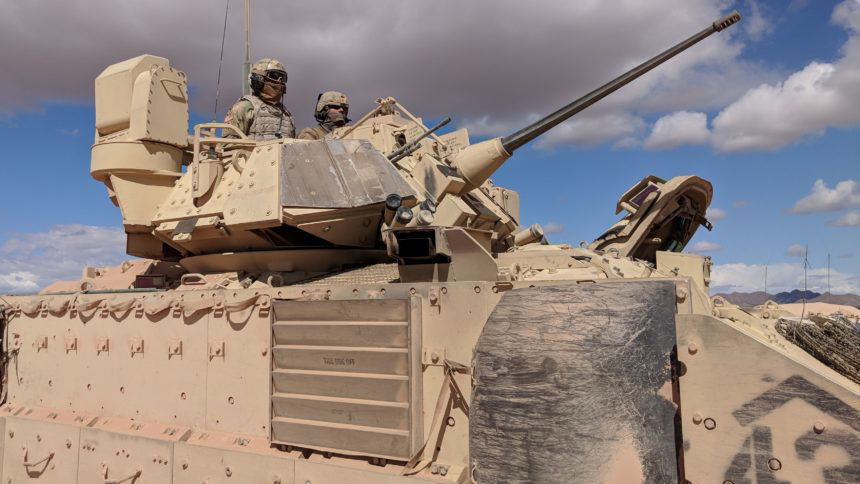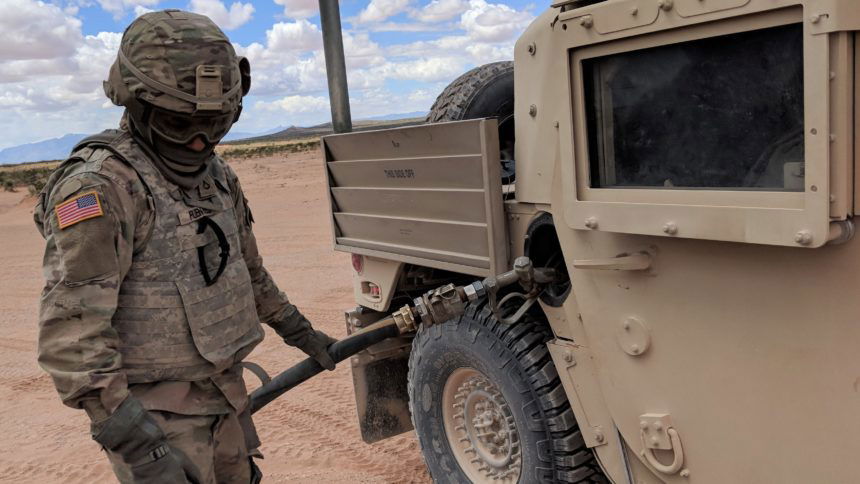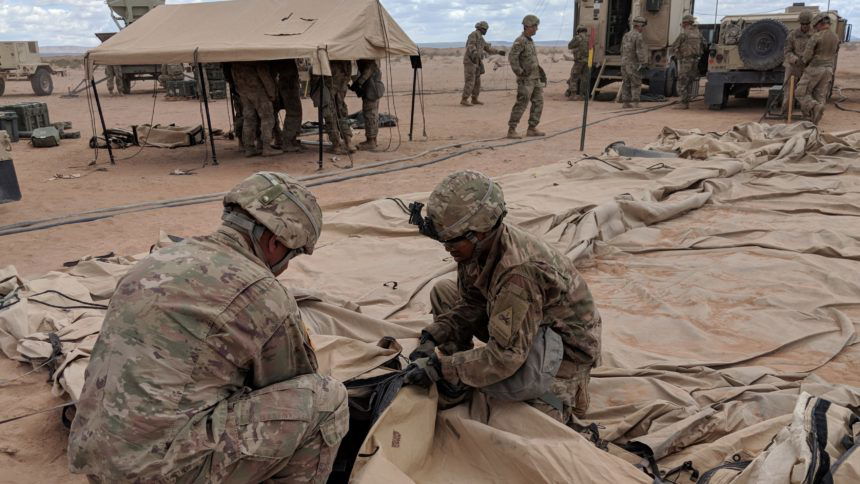Fort Bliss Iron Brigade soldiers to deploy for the ‘Super Bowl’ of Army combat training





About 4,000 soldiers from Fort Bliss’ 2 nd Armored Brigade Combat team are about to undergo the Army’s stiffest training challenge — a training rotation at the National Training Center.
Soldiers from the Iron Brigade will load up their equipment and travel about 800 miles to Fort Irwin, Calif., in the middle of the Mojave Desert, for what is often called the Super Bowl of Army training.
Many experienced soldiers say a rotation at NTC is actually harder than a real-life deployment because of the constant set of challenges it presents and the high operational tempo.
“I share the same view,” said Major Cole Pinheiro, the executive officer for 2 nd Brigade. “It is the Super Bowl. It is a crucible.”
The 2 nd Brigade will spend about a month at NTC from late September to late October.
While at NTC, they will be thoroughly challenged by the resident opposing force — the 11 th Armored Cavalry Regiment. An opposing force, or OPFOR as it is known in the Army, is the equivalent of a scrimmage partner in football.
“We are really looking forward to training against a world-class OPFOR,” said Pinheiro, who is from Tehachapi, Calif. “The 11 th ACR is the best OPFOR in the world. We are looking to refine and sharp tune some of our tactical and operational processes for potential follow-on missions.”
Another aspect that makes NTC a pinnacle training experience is its staff of observer-coach-trainers, or OCTs, who are collective experts in virtually every Army job. They run the exercise and provide plenty of feedback and coaching to help visiting units improve and reach the next level.
“We’ll learn a lot about ourselves,” Pinheiro said.
The last time 2 nd Brigade went to NTC was in August 2017 before it deployed to Kuwait and other places in the Middle East from October 2017 to July 2018.
To prepare for the upcoming rotation, the brigade has been training out in the vast Fort Bliss training area – roughly the size of the state of Rhode Island – since January.
Every time the brigade goes through a training event, it does a self-evaluation to determine what it does well and what it needs to improve on, said Sgt. Maj. Jeremy Prickette, the operations sergeant major for the brigade.
The key is to master basic soldier skills and build on that, said Prickette, from Clintonville, Wisc.
“In order to be really good at what we want to do, we have to be great at the basics,” Prickette said. “That is what we have focused on, basic things that every soldier does.”
Maj. Andrew Boyd, the operations officer for 2 nd Brigade, agrees that the key to success at NTC and beyond is to master basic skills.
That gives you the ability to respond to any situation, said Boyd, from Chuluota, Fla.
“You have to do the basics well, making sure you know how to respond to chemical attacks, making sure you have systems in place to track thousands of people and hundreds of pieces of equipment over great distances, when perhaps your computer goes down due to operator error or enemy cyber attack,” he said.
“We have those systems,” Boyd said. “We can fight this fight like they did 20 or 30 years ago, down to the platoon and company level and we can do it at the brigade headquarters level.”
KVIA 2019